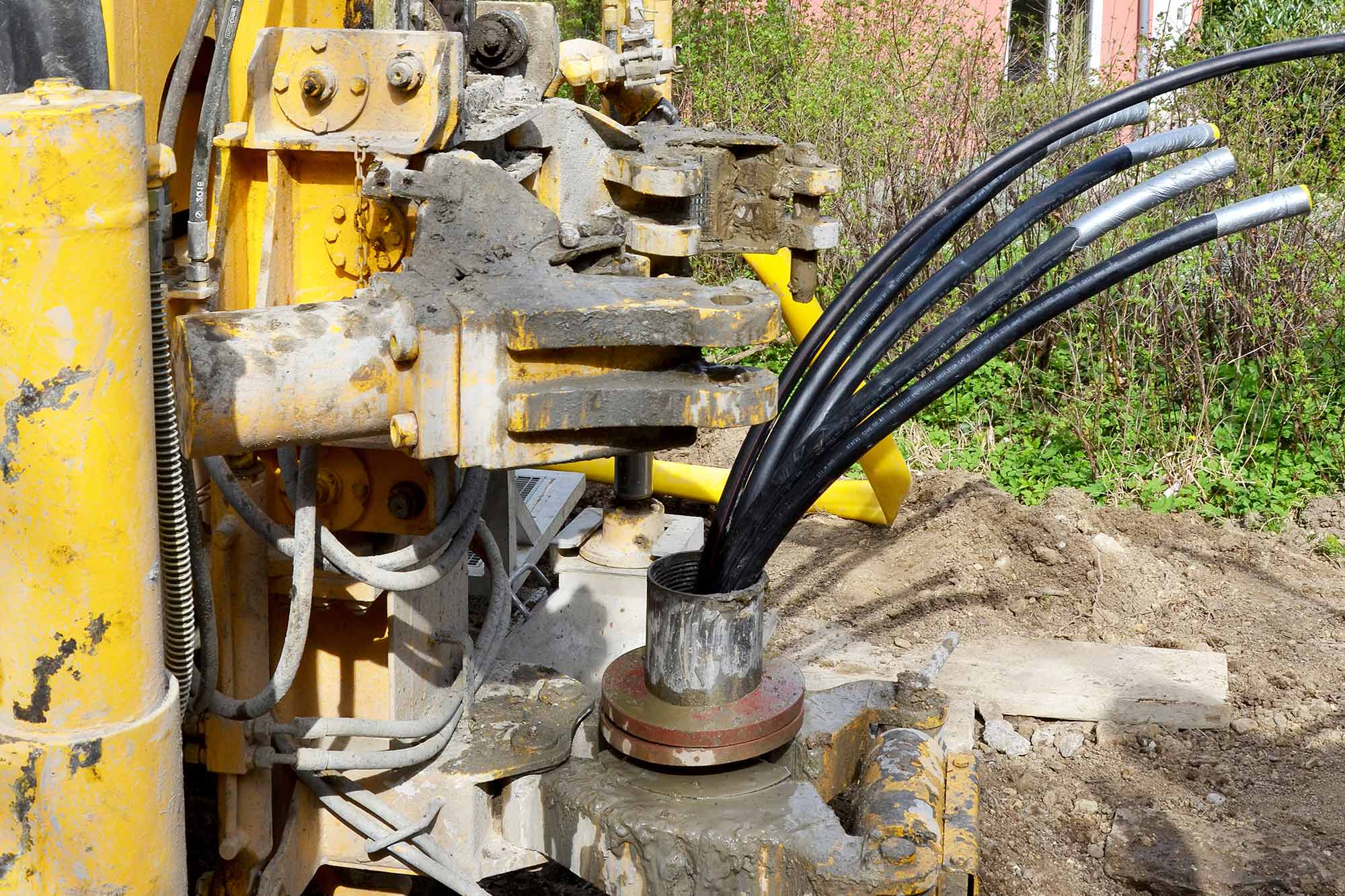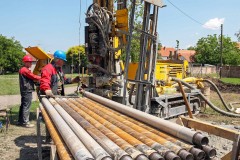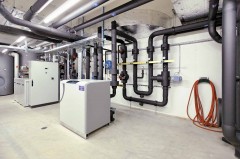District heating and hot water supply account for around a third of Austria’s energy consumption and some 20% of its CO2 emissions.1 If the country is to meet its target of achieving climate-neutrality by 2040, then the “heating transition” – the shift to renewable energy sources in the heating sector – needs to be accelerated. Alongside biomass technologies, district heating and direct solar energy, geothermal energy also has the potential to become a major component of the energy system of the future.
Heat strategy for Austria
Representatives of all nine federal states are currently working together with the Federal Ministry for Climate Action, Environment, Energy, Mobility, Innovation and Technology (BMK) and the Federal Ministry of Finance (BMF) to formulate a heat strategy for Austria. In accordance with a resolution by state energy ministers, backed by state governors, the target of decarbonising the heating of buildings (residential and non-residential) by 2040 is to be met by switching to renewable energy sources. This shift to renewables will involve biomass, solar energy, geothermal energy and ambient heat, amongst other sources. The heat strategy for Austria prepared by the federal government and federal states is also to focus on further reducing energy consumption.
Harnessing heat from the earth
The term “geothermal heat” refers to the heat energy that is stored below the solid surface of the planet in layers of rock and earth and in underground reservoirs of water. Geothermal energy technology is a sustainable, environmentally friendly way to harness these heat sources. The heat stored underground can be used to provide heating and cooling, to generate electricity or in combined heat and power (CHP) plants and is particularly suited to local energy supply concepts. The technology is also becoming increasingly important for the seasonal storage of heat underground. Essentially, a distinction is made in geothermal heating between low-temperature applications (source temperature <30°C), which are generally supported by heat pumps, and direct heat applications with temperatures over 60°C.
Economic effects
A study2 by the Energy Institute at Johannes Kepler University Linz assessed the effects of investing in renewable energy sources on economic growth and employment. A scenario involving additional growth of around 3 TWh per year in the years until 2030 was considered for near-surface geothermal energy. Taking into consideration the assumed expansion trend and the resulting investments and substitution of fossil energy imports, this indicated that over 12,000 new jobs could be created along with an extra EUR 0.9 billion in GDP by 2030. The simulations for hydrothermal energy assumed additional growth of 2.1 TWh in the years until 2030 for both seasonal heat accumulators and the use of naturally occurring hot springs for direct heating and electricity. This would result in over 2,000 new jobs and an extra EUR 0.1 billion in GDP in 2030.
Near-surface geothermal energy
Near-surface geothermal energy involves heating or cooling energy being generated from the top layers of earth and rock using geothermal probes or surface collectors or by making direct use of the thermal groundwater. This can go down to a depth of roughly 400 meters, with temperatures around 30°C. Geothermal probes and collectors are pipeline systems containing circulating water that enable heat to be extracted from or fed into the soil. This is then coupled with a heat pump system to provide district heating and hot water or to cool buildings. If there is a body of thermal, i.e. heated, groundwater near the surface (outside groundwater source protection zones), then this heat can also be utilised directly. Geothermal heat can thus help to replace fossil fuels for providing heating and cooling.
Deep geothermal energy
Deep geothermal energy systems draw heat from a depth of around 1,500 to 5,000 meters, where temperatures can exceed 60°C. There are two types: hydrothermal systems, which transport the energy stored in warm to hot thermal water, and petrothermal systems, which exploit heat from rock strata far below the surface that carry little or no water. The heat from deep underground can be used to generate both heat and electricity. With a hydrothermal system, hot water is transported to the surface up a deep well. The thermal energy passes through a heat exchanger and into a district heating network, for instance, before the cooled water is fed back underground. A petrothermal system requires tightly packed strata of sedimentary or crystalline rocks far below the surface at temperatures in excess of 150°C. The heat inside the hot rock is harnessed by breaking open a large number of small fissures in order to create channels through which water can be pumped. The heated water that circulates through this newly created system of fissures is brought up to the surface through a supply well and transported back into the reservoir rock via an injection well.
Use in austria
Some 90,000 geothermal heat pump systems are currently in operation in Austria, generating a total of around 2.3 TWh of heat (including the electrical part of the heat pump). There are also ten heat generation plants in the country at present that make direct use of naturally occurring bodies of thermal water, generating roughly 300 GWh of heat in total. Two sites also use heat to generate electrical energy in the amount of some 2.5 GWhel.3 Cooling is also playing an increasingly important role amongst the low-temperature geothermal energy applications, although no corresponding market figures are yet available. Petrothermal energy generation requires significant research, and no pilot plants have yet been set up in Austria..
Potential by 2040
According to various studies, the following amounts of heat could technically be generated from geothermal energy in Austria in the years until 20404:
> Near-surface geothermal energy: 15 TWh from low-temperature geothermal energy applications, including heat accumulators. This will be limited by the availability of open spaces for the installation of geothermal energy systems and of specialist service providers (drilling companies, planning firms)
> Deep geothermal energy: 9.2 TWh from high-temperature geothermal energy applications, including heat accumulators. This includes using hot springs that have already been identified as well as setting up initial pilot systems to exploit hot rocks that carry little or no water (hot dry rock technology).
As well as using geothermal energy to generate heat, it is estimated that 0.7 TWhel of electrical energy could be produced by CHP plants.
In this edition, we present some current projects for the exploration of geothermal energy in Austria from the programmes adopted by the Federal Ministry for Climate Action, Environment, Energy, Mobility, Innovation and Technology (BMK) and the Climate and Energy Fund.

„Geothermal energy is an incredibly versatile yet sleeping energy giant that now needs to be woken up. The IEA’s 2020 Energy Technology Perspectives5 show that climate-neutrality cannot be achieved by 2050 without harnessing geothermal energy to provide heating and cooling for homes, buildings and industry. Likewise, Europe’s Green Deal can only be implemented if geothermal energy is both more widely used and more integrated into local, regional and national energy systems, especially in combination with underground energy storage. Research and innovation help to cut costs, increase value added and bring more industry players to the development and utilization of geothermal energy. Austria has strong national competences in the geothermal value chain, which can also be deployed on the international stage. And, conversely, Austria’s key players can learn lessons quickly and efficiently from the experience gained at European and international level so that geothermal energy can play its role to achieve a climate-neutral Austria.”
Gunter Siddiqi
(former) Energy Research at the Swiss Federal Office of Energy and Chair of the IEA Renewable Energy Working Party
1faktencheck-energiewende.at/fakt/ohne-waermewende-keine-energiewende
2 Economic growth and employment from investing in renewable energy sources, JKU Linz Energy Institute, Linz, October 2020
3 Geological Survey of Austria, www.geologie.ac.at
4 Verein Geothermie Österreich, www.geothermie-oesterreich.at
5 www.iea.org/reports/energy-technology-perspectives-2020


